When I say “perfectly” what I mean is PERFECTLY. I’ve eaten my share of skirt steak over the years, both inside and outside skirt. For the difference between the two check this quick read out. Skirt steak is generally sliced very thin and used for tacos or quesadillas. This cut packs a robust beef flavor but it’s sliced thin for a reason—it’s tougher than the East end of a bull heading West, and can get chewy. Until now!
Skirt steak may just be, dare I say, my new favorite cut of meat. I’ve been a ribeye or strip steak kind of guy for a long, long time because like most, I love the combination of fat marbling and tenderness those cuts of beef offer. Skirt steak has a perfect fat content, and now that I’ve perfected the cooking method it’s not fork tender, it’s spoon tender. Check the video below, I’m literally cutting skirt steak with a spoon.
How to cook skirt steaks perfectly.
It all starts with the sous vide technique that I’ve blogged about before for filet mignon or corned beef. This is the part that might scare some people off, but stick with me here and you’ll be rewarded. We’re going to sous vide this cut for 36 hours.
Wait….what???
Yes, to cook the perfect skirt steak we’re going to start with 36 hours in a water bath of 130 degrees. Then we’re going to refrigerate and then we’re going to sear this incredible piece of meat in a cast iron skillet. You can also sear this on the gas grill or charcoal grill over direct high heat. More on that later. If you’ve invested in one of the newly en vogue home broilers like we’ve reviewed here, this is another excellent choice. To be honest it’s my preferred choice but not everyone has one of these because they are rather expensive.
Now comes the good news, as far as how much work is involved, you’re off the hook. There’s only about 15 minutes worth of actual work to be done, the rest of the time you’re just letting the equipment do the work.
Why should I sous vide skirt steak?
If you’re a regular reader of this blog, you know that I recommend sous vide for thicker cuts of meat as it guarantees the edge-to-edge doneness that’s hard to achieve using traditional methods of cooking on cuts more than about an inch and a half thick. The reverse sear method also works well for edge-to-edge doneness on thick cuts of meat. That said, the reverse sear method at 130 degrees for 36 hours just isn’t practical.
If you’ve looked up other methods of how to cook skirt steak, you’ve likely come across countless blogs about letting the meat get to room temperature and then searing hot and fast. This is based on the thin nature of this cut. This is fine for thinly slicing skirt steak…I guess. If you slice anything thin enough it’s probably chewable in a taco or quesadilla.
So, why spend so much time sous vide cooking a thin cut of meat that can be cooked hot and fast? Simple, because I don’t always want to eat skirt steak thinly sliced in a tortilla of some sort. Spending this amount of time in a water bath allows the connective tissue that makes this cut so tough the opportunity to break down, delivering the earlier spoon tender steaks. So, this brings up the next logical question: How did I determine that 36 hours was the sweet spot? Read on…
Sous vide times for skirt steak.
I could make up some scientific mumbo jumbo here that makes me sound smarter than I really am, but I’m not much for snake oil. The truth is, I determined 36 hours using good old fashioned trial and error. I started this skirt steak experiment with four steaks. Three steaks I put in the sous vide bath—one for 6 hours, one for 12 hours, and one for 24 hours. I used the final steak as the control and cooked it like I normally would, no sous vide, just room temperature and then hot and fast in an extremely hot pan.
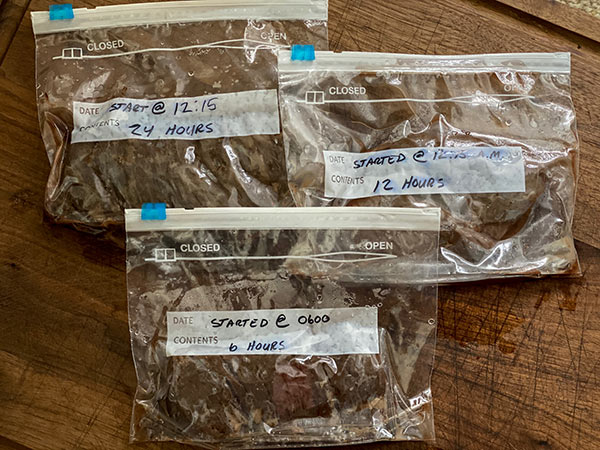
By timing the experiment accordingly, I was able to sear all the steaks at the same time and do a blind tasting with several other foodies. During the blind tasting I noted that there was nearly no difference between the control steak and the steak that was sous vide for only 6 hours. Certainly not enough difference to warrant the six hours of cooking time.
The next collective observation was the mouth feel on the steak that went 12 hours. It was slightly, but noticeably more tender than the other two; still not tender enough to be cut with a spoon, but better.
Next up was the 24 hour steak. This one was markedly more tender than the control or 6 hour steak, and slightly yet again more tender than the 12 hour steak. More than acceptable to be sure, but still not perfect—so I was back to the drawing board with 3 more steaks.
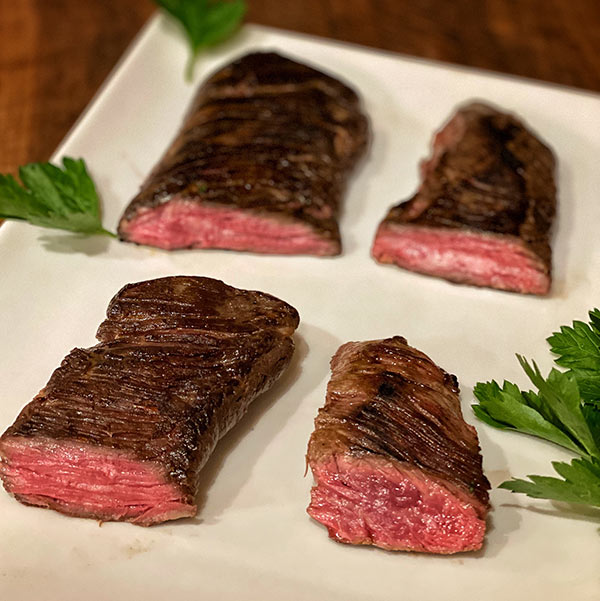
With steaks 5, 6 and 7 on deck, I planned to do one 36 hours, 42 hours, and 48 hours. The long and short of this was that 36 hours was absolutely perfect. 42 hours was almost too tender if that’s a thing, and 48 hours was like canned dog food consistency…overkill.
Directions for cooking the perfect skirt steak:
Step 1: Set your sous vide water bath to 130 degrees F
Step 2: Using a sharp boning knife, trim any excess fat and silver skin off your steaks.
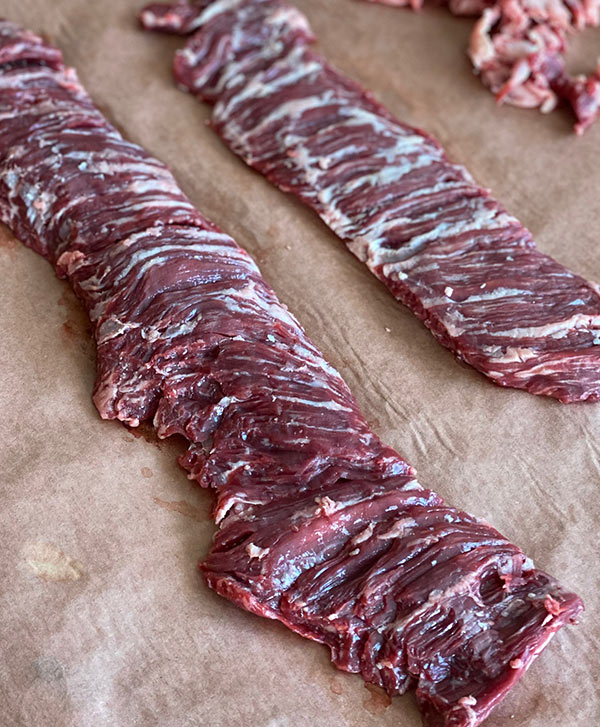
Step 3: Season steaks with a pinch of sea salt on both sides.
Step 4: Seal steaks in a vacuum bag or zip top bag, removing as much air as possible.
Step 5: Drop into water bath and cover with lid. I don’t use the lid for shorter sous vide cooks but without a lid over 36 hours you’ll constantly be adding water (and causing the temperature to fluctuate) due to evaporation.
Step 6: Remove steaks from water bath after 36 hours and place immediately in the refrigerator for about 20 minutes.
TIP: Placing in refrigerator for 20 minutes allows the center of the steak to cool just slightly before the sear, preventing an overcooked steak. I don’t recommend skirt steak cooked to over medium temperature. If medium well is your preference, I recommend just baking a piece of chicken.
Step 7: Get a cast iron pan, grill or salamander style broiler if you have one set to high heat.
Step 8: Remove steaks from fridge, pat dry on both sides and coat both sides with a very light coat of avocado oil.
Step 9: Place steak as close to heat source as possible and sear for one minute on each side.
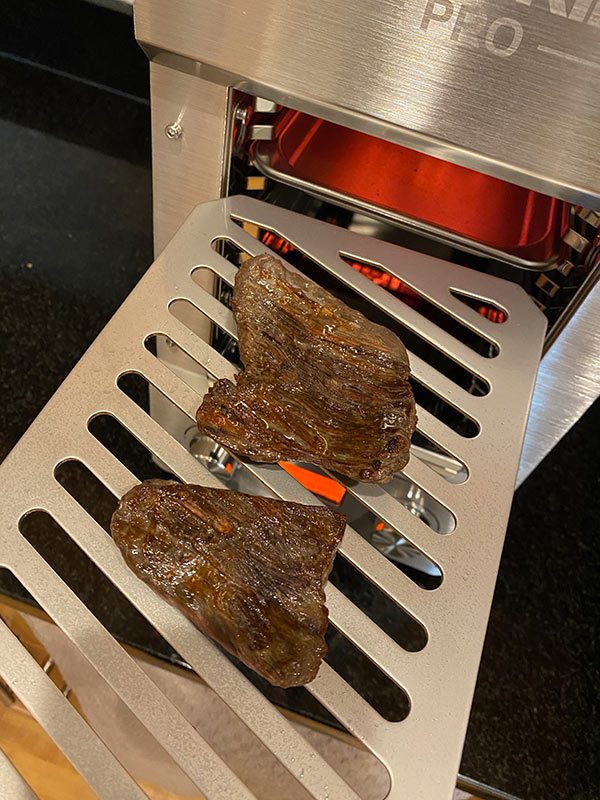
Step 10: Remove from heat source, season with pinch of salt (optional) and slice immediately. No rest required on this cut.
Step 11: Serve with a healthy portion of chimichurri for optimal flavor high.
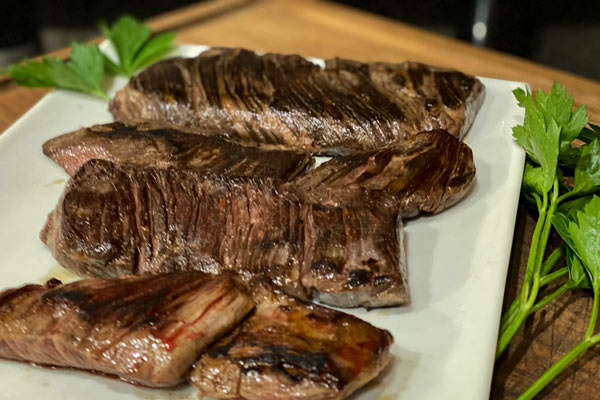


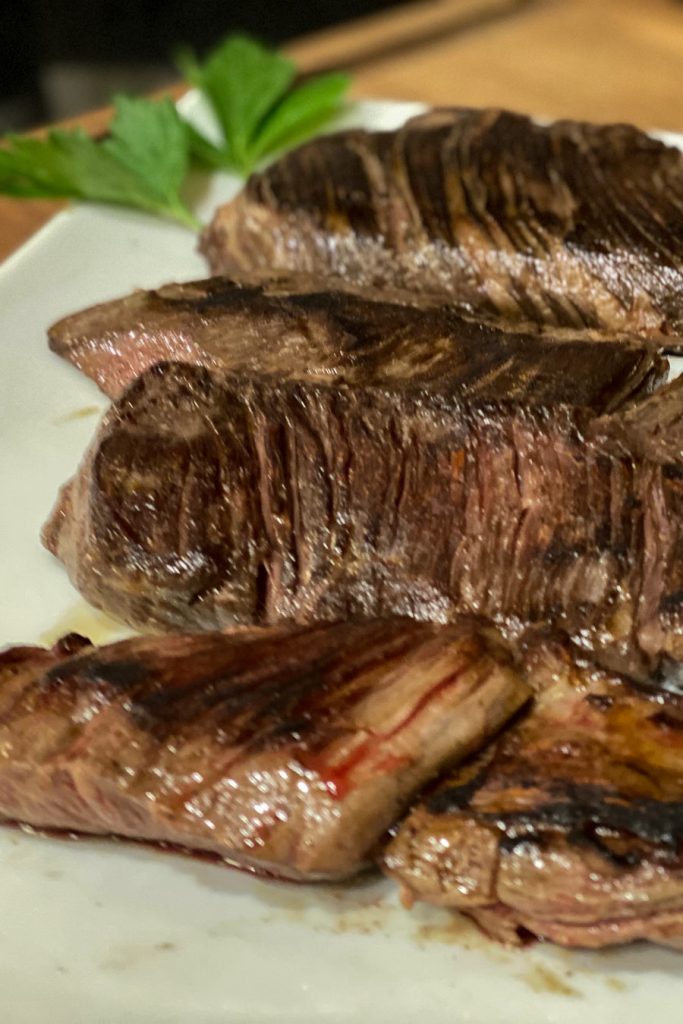
Hello Matt Great stuff. glad i found you.
Thanks John, glad to have you here.
-M